Pulau Ubin: Singapore’s Memory Lane
When my new friend and fellow blogger, Betsy Wuebker, posted about her visit to Pulau Ubin, near Singapore, it couldn’t have come at a better moment.
I was on my way to Hong Kong but had just heard from my foster daughter, Krislyn, who lives in Singapore now. It turned out she couldn’t come visit me in Hong Kong while I was there, and could I go to Singapore to see her instead?
Disclosure: This article contains affiliate links. If you click on one of them and make a purchase, I will receive a small commission. This will not affect your price.
I very much wanted to see her, of course, but didn’t particularly want to be in Singapore. It’s too urban and new for my likings. Hong Kong has a grittiness I find more interesting.
So when I read Betsy’s article, I knew what I wanted to do with my one full day in Singapore: go visit Pulau Ubin.
Krislyn, the quintessential city girl, was horrified. Too rural, too many mosquitoes. So, instead, I went with her aunt, Billie, and Billie’s son, and agreed to meet Krislyn in the afternoon when we were back.
Since Betsy did such a good job describing Pulau Ubin, I’ll just add some comments to what she wrote rather than repeating it. Please go ahead and read her post; I’ll wait!
To summarize, Pulau Ubin has been for the most part untouched by Singapore’s frantic rush to become a shiny, modern city. It still has some of the traditional kampong buildings that are pretty much the same as they were in the 1960s, when the island was home to about 2000 people, mostly employed in granite quarries. The quarries, now abandoned, have filled with water to form lakes, and the island is also home to a wetlands nature reserve called Chek Jawa.
If you haven’t booked your accommodations in Singapore yet, just click around the map below to see what’s available!
Memory Lane
Our bumboat brought us to the little town whose main street is lined with cafes, souvenir shops, bike rentals and such to cater to the day-trippers like us. We immediately rented bikes and headed out of town.
Billie told me that when she was a kid she used to go to Pulau Ubin often with her friend whose grandmother lived there. She hadn’t been there in many years, and commented as we explored the island on all the things that had changed.
The roads are much better; they weren’t paved when she was little.
Many of the houses she remembers are gone, and she commented more than once on the bad condition of some of the remaining ones. The traditional, original houses are all made of wood.
You might also enjoy these other articles about Singapore:
At one point, as we were bicycling down the road, she pointed out a house that was barely visible in the dense undergrowth on one side, up a hill. “That was my friend’s grandmother’s house!”
I had noticed a path just before that and wondered, in passing, where it led. Now I knew. We got off our bikes – no need to lock them on an island where anyone stealing one would have to take it away on a bumboat – and picked our way up the path. Very overgrown, it was hard to navigate, involving scrambling over some trees that had come down across it.
The house, Billie guessed, hadn’t been lived in for 20 years or so, and it looked it: boarded up, overgrown, crumbling. We could only see inside through a crack, and it looked like it had been left in a hurry, judging by what we saw through that crack. It looked like laundry hung up to dry. Billie told me the woman hadn’t been able to take care of herself and had been moved to a nursing home in Singapore city.
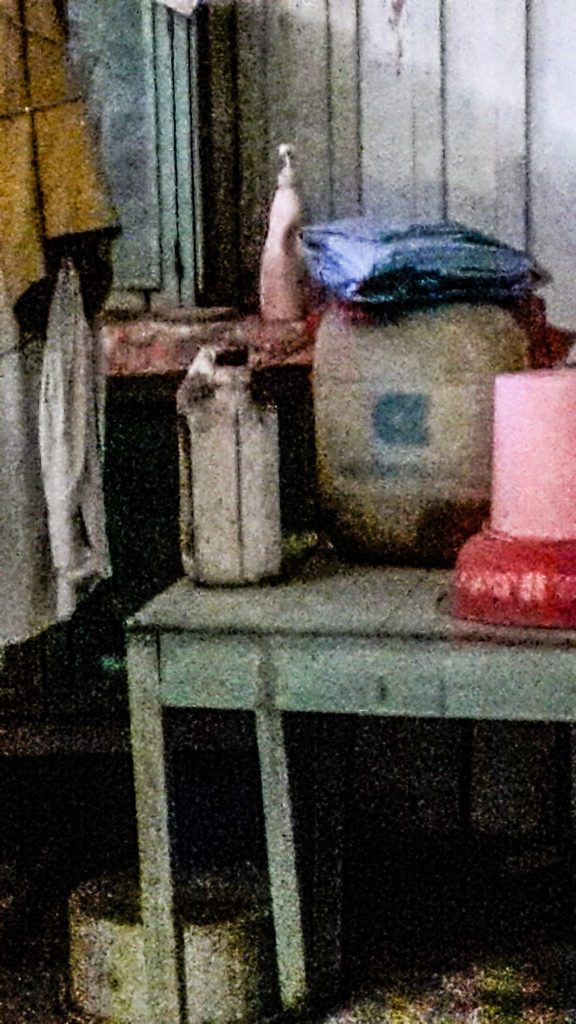
Crashing about in the undergrowth, Billie’s reminiscences continued as she gestured. “That was where the pit toilet was.” And a shed over there. Across the road, there used to be a public bath they used. She told me about some of the foods they used to eat when they visited too.
I asked her about the planned development Betsy mentioned in her post. She didn’t seem very concerned about it. Her guess was that it didn’t mean anything more than making it easier for locals from Singapore to visit. The paved roads, for example, and perhaps new public toilets and other facilities for day trippers. She didn’t think it would go much beyond that, with big hotels or other big projects that would change things too much.
Billie’s theory about the rather rundown condition of the remaining buildings was that the owners might be waiting to see what the government was planning. Maybe the government would pay for the renovation or restoration of their houses, in order to preserve Pulau Ubin’s history. Alternatively, they might want to take them over and restore them for their own purposes. In Singapore, she said, if the government wants your building or land they have to pay market price. So, she guessed, the owners are waiting to see what happens.
Note added in 2021: While I haven’t been back to Pulau Ubin, it seems that not much has changed, judging from Singapore’s parks website. The sights it lists were there when I visited, except at the time I don’t think Teck Seng’s Place had been opened yet. This is a traditional kampong house that has been restored and is now a museum.
Shrines on Pulau Ubin
We didn’t go to the German Girl’s shrine, though we briefly spoke to a pair of Latvians who hadn’t been able to find it despite their best efforts. We did, however, visit a couple of other shrines, one of which was particularly attractive (Billie was just pleased that they had clean toilets.). It was a Thai Buddhist shrine, according to Billie, but the banners are something I associate with Nepal. In any case, there was something magical about standing under all those colorful banners as they fluttered in the cooling breeze while a group of monks chanted in a low monotone nearby.
Drink stands
Here and there along the roads, locals have set up stands to sell drinks to passersby. We stopped at two of them, and I learned that these stands are also often their homes. In one, it seemed that we were stepping into their living room. I could see a room to the side with the door ajar where a bed was visible. An elderly man sat at a table, using shears to clip some herb or other that he had picked. He told us that villagers grow various herbs to sell in Singapore.
At one stand we could buy a fresh coconut, which the vendor hacked open, inserting a straw to drink out the milk. I’m not a fan of coconut milk, but Billie and her son enjoyed drinking it and then using a spoon to scrape the coconut meat off the sides.
If you don’t want to do it on your own, here’s a guided bike tour of Pulau Ubin!
What to bring to Pulau Ubin
Despite Krislyn’s worry about mosquitoes, I didn’t have a problem with them. Nevertheless, it would be a good idea to apply some bug repellent. You should also put on sun lotion beforehand. Be prepared for some serious heat and humidity though, by carrying plenty of water or stopping at all the drink stands.
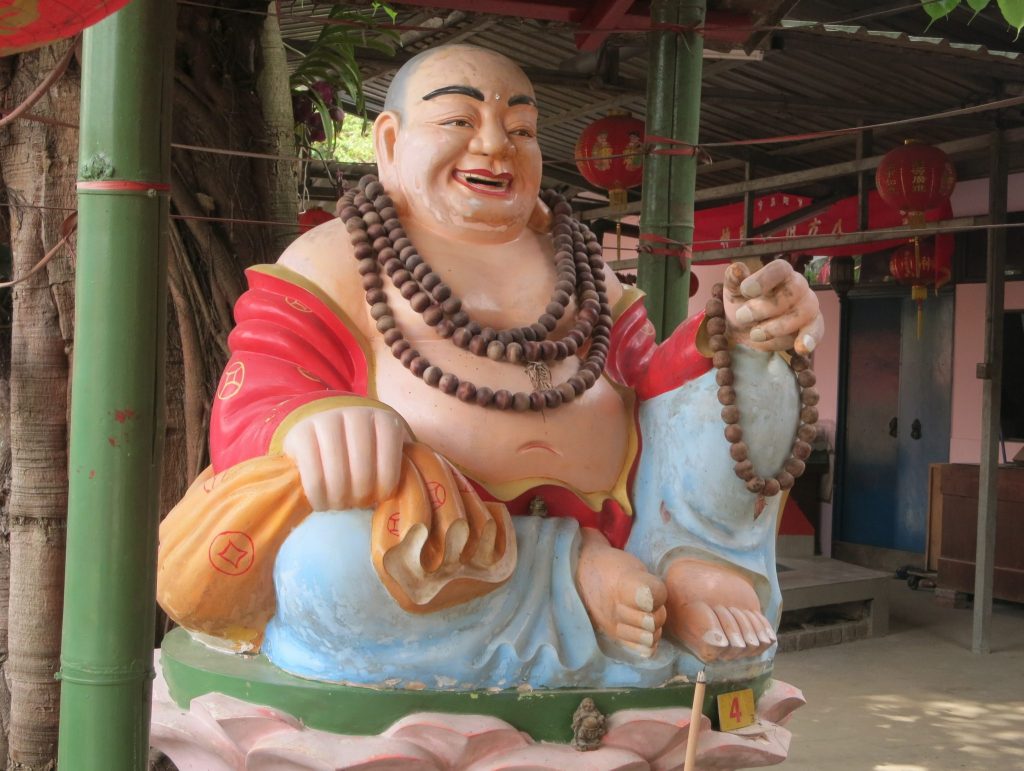
If you rent bikes, check that the brakes work and that the height of the seat works for you. If you’re tall, that might be a problem: even on its highest setting my bike seat was a bit too low and too close to the handlebars.
According to Betsy, Pulau Ubin is a taste of what Singapore once might have been like. Billie’s reminiscences seemed to confirm her assessment. It will undoubtedly change in the next few years, but, hopefully, that won’t destroy the atmosphere, just make it more accessible. And it certainly makes a pleasant day’s escape from the big modern city of Singapore.
Have you been to Singapore? What were your impressions?
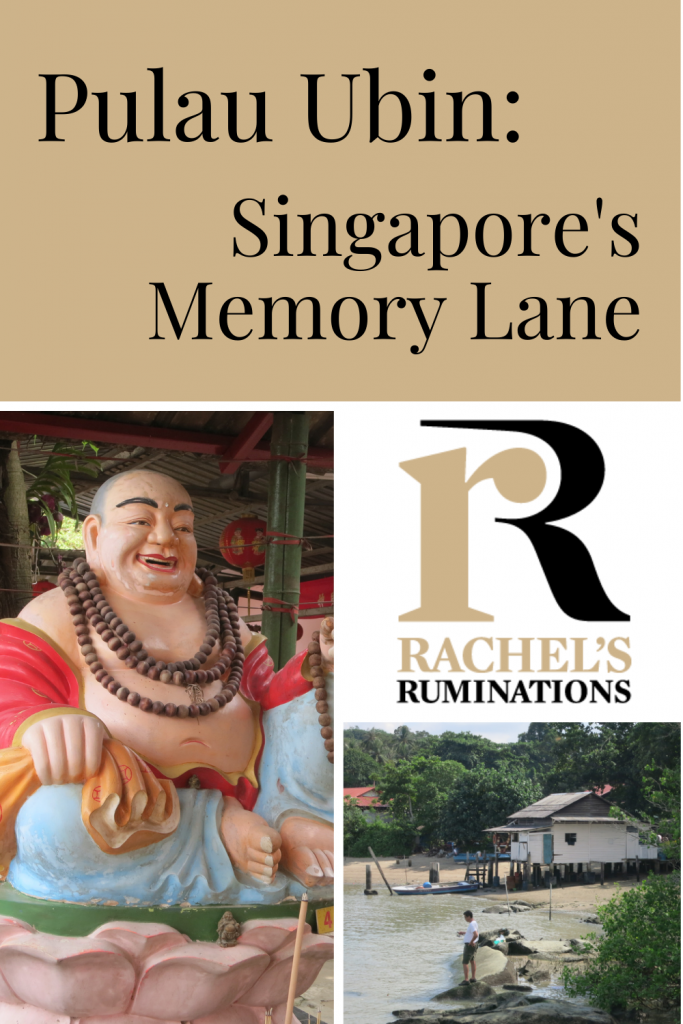


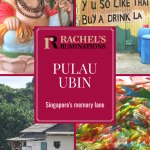
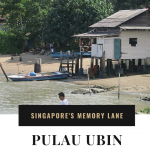
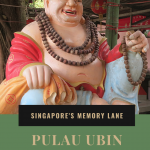
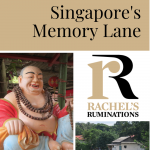
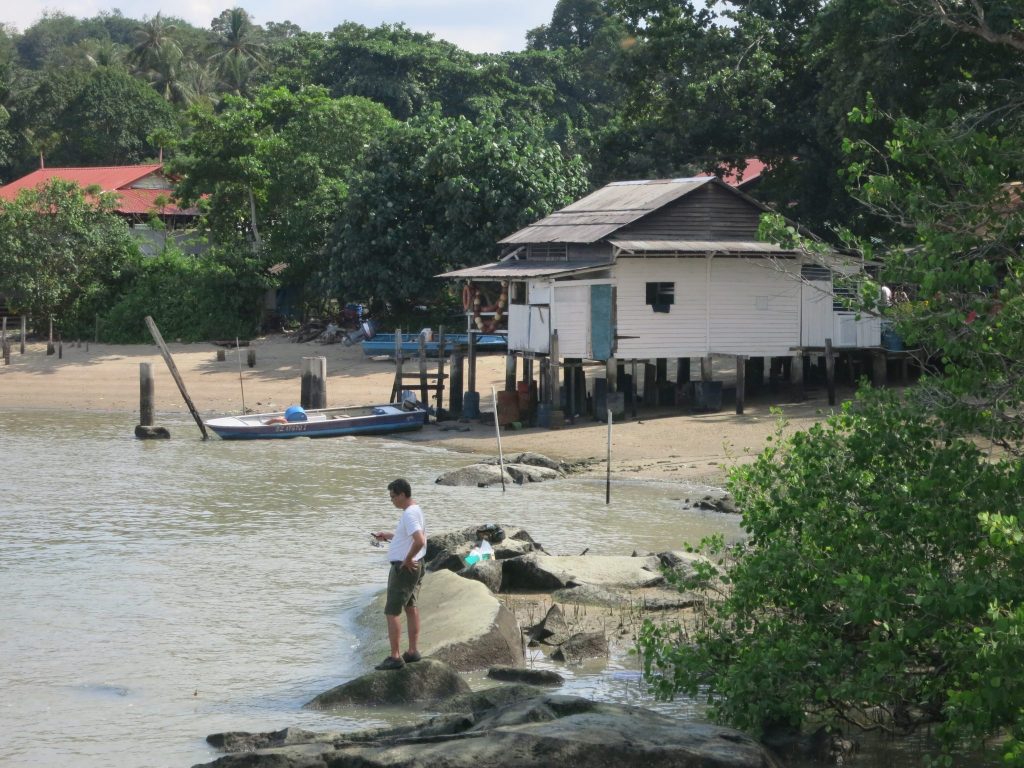

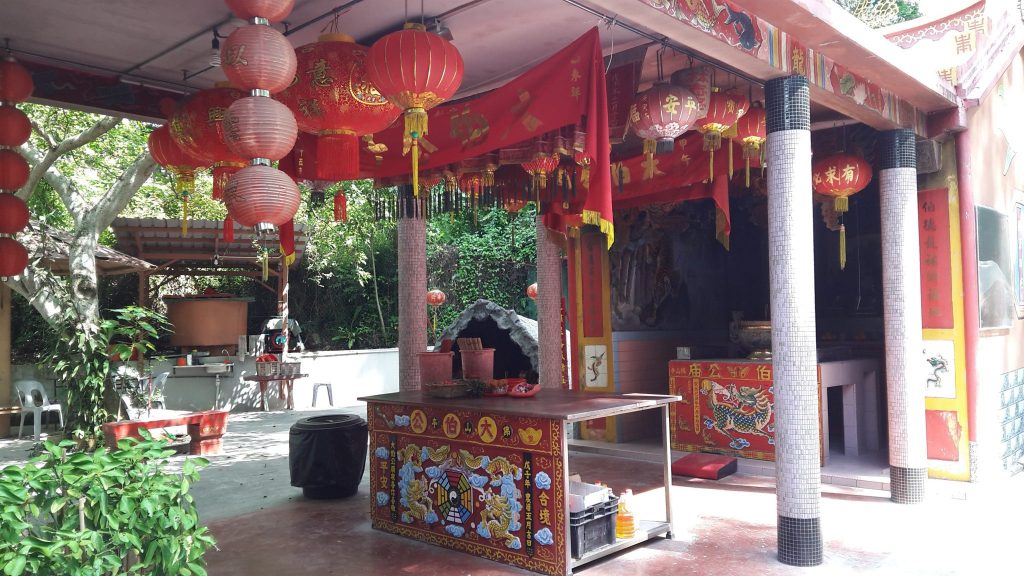
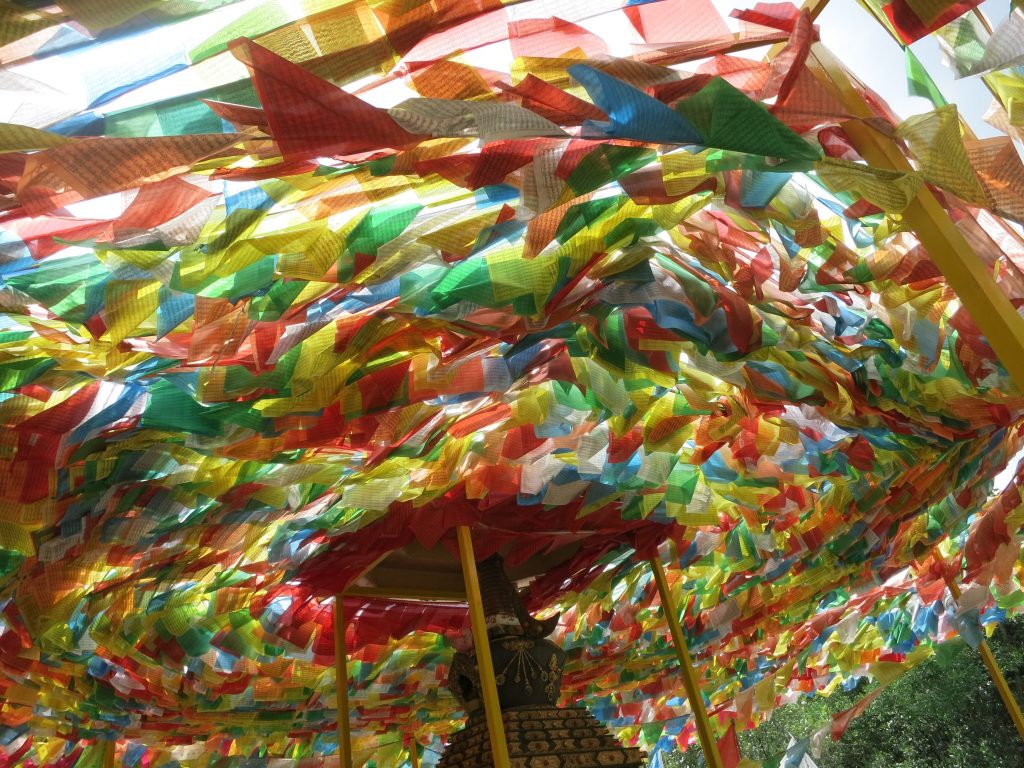
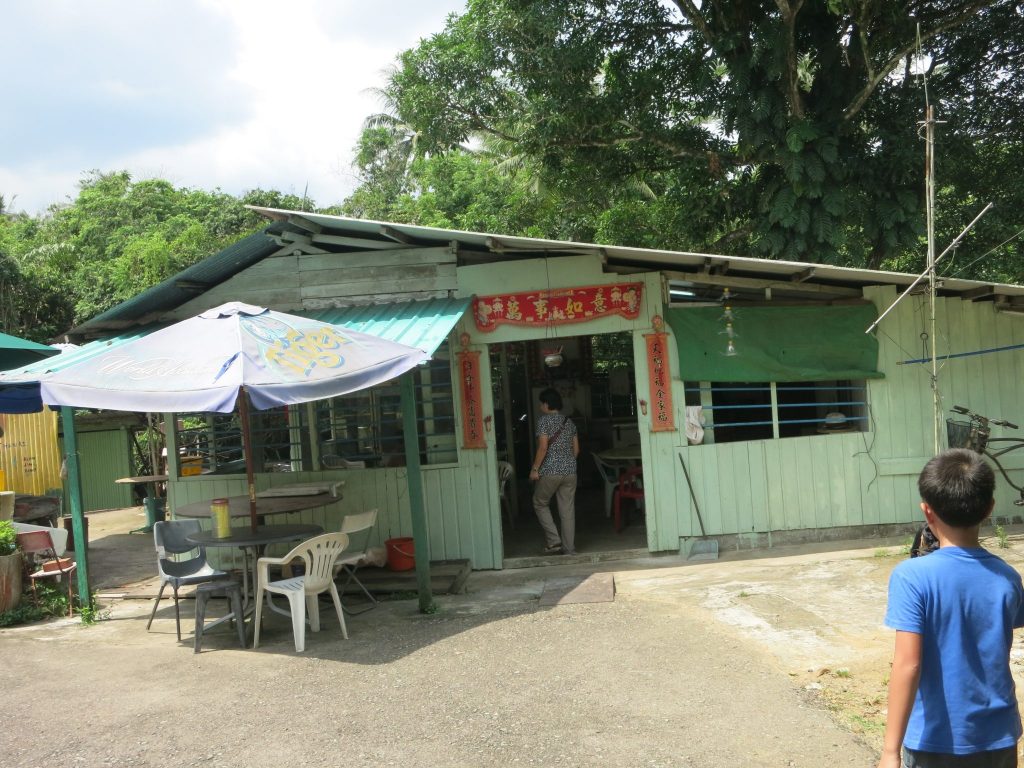
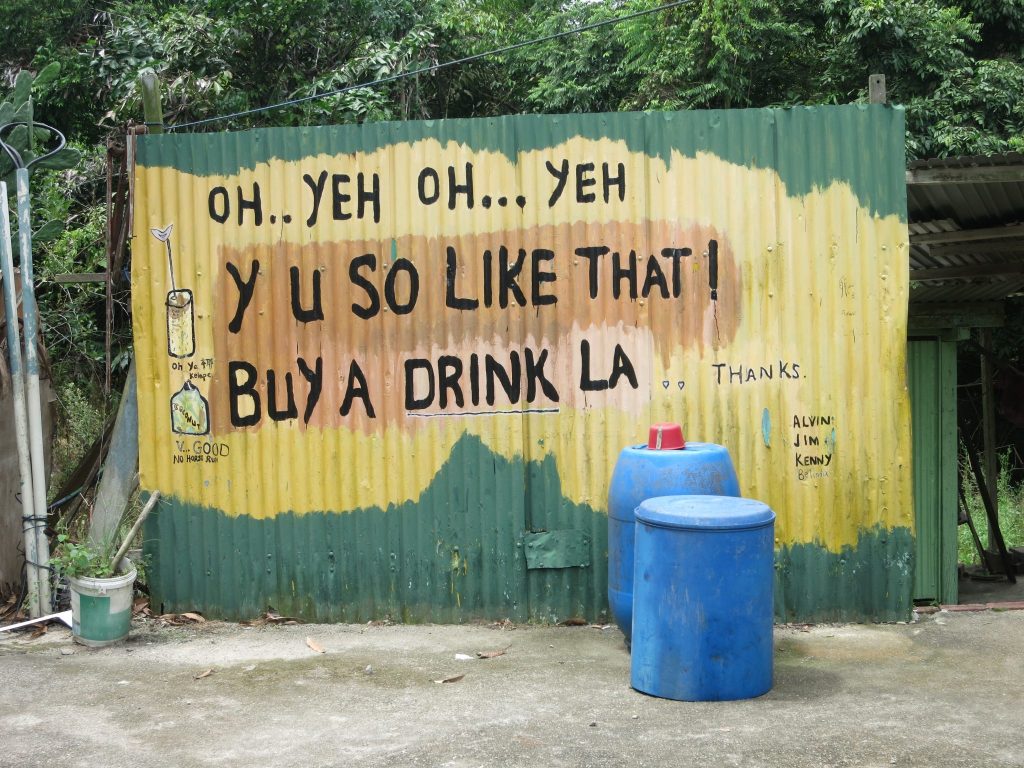
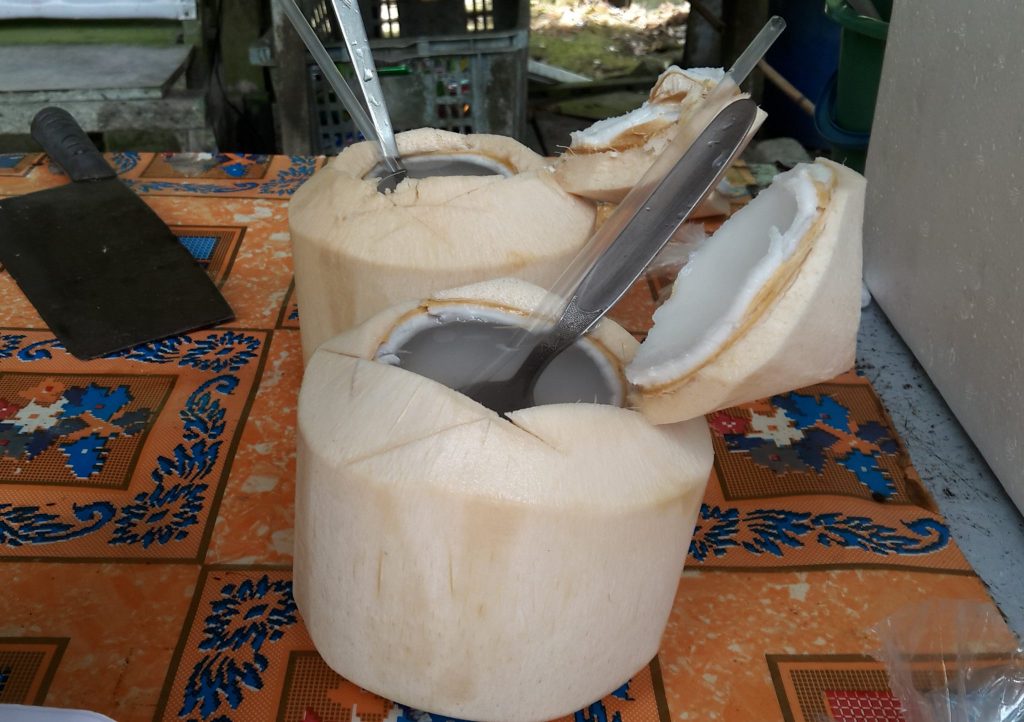

Oh, Rachel, I am so glad you made it to Pulau Ubin! What a special day to spend with Billie, who has such a personal connection. Thank you for linking to our article, too!
You’re welcome! Your timing couldn’t have been better!
I wrote about our visit to Singapore two weeks ago and had at least one traveler comment that it had grown and changed since their visit not so many years ago. It is sleek and modern but the ethnic quarters are fabulous. Spent time in the Chinese Quarter and missed out on India Quarter – next time!
Yes, it’s growing fast, I think. I wish they’d put more of that energy into restoring and preserving old architecture rather than always assuming that newer is better. Thanks for commenting!
I have been to Singapore and really enjoyed it and since they have developed Singapore’s Gardens by the Bay I would like to go back. But love the idea that we can see something that is not shiny and new.
I actually visited that too and had a nice stroll around with my foster daughter but didn’t find it terribly interesting, except for one really cool piece of art. I’ll look through my pictures and see if there’s enough to say for me to post about it…
Great to know there are places like this close to urban centers. The souls needs to recharge once in a while. It would be great to bike around.
Yes, it’s very bikeable, except for the heat and humidity. Maybe other times of the year would be better; I’m not sure. But you’re right, even if it’s just a park, people need some nature! Look at Central Park in NYC, for example. People would go nuts without it!
Sounds like you had a fantastic day on Pulau Ubin. I’ve been to Singapore, and the highlight for me was the Singapore Zoo. I’m not usually a big fan of zoos, but this one is definitely world class. Next time I get there I’ll have to make a little trip to Pulau Ubin. I love those flags flying in the wind.
It didn’t even occur to me to go to the zoo. Maybe next visit! I’d love to hear what you think of Pulau Ubin when you get there.